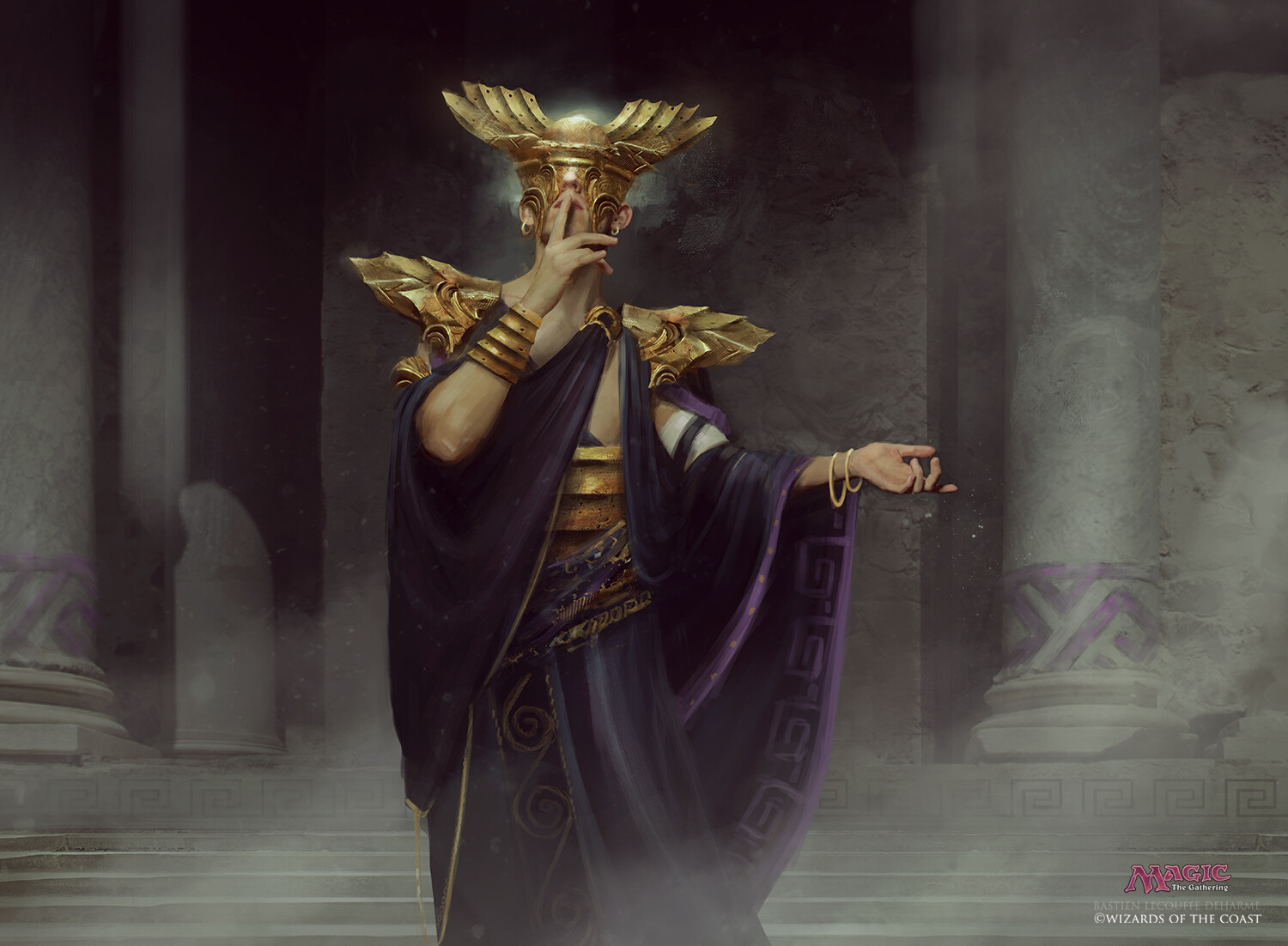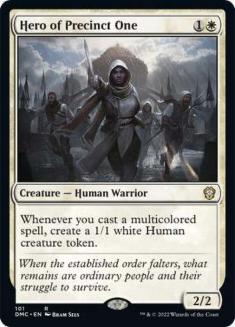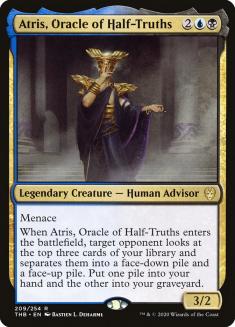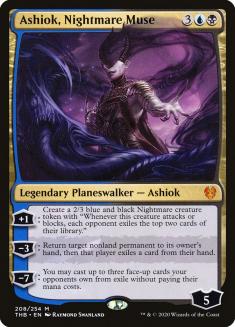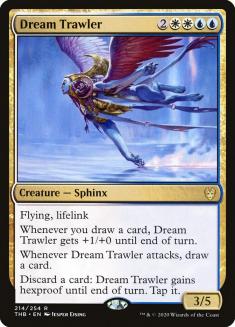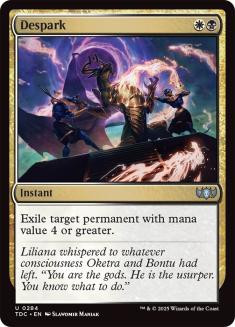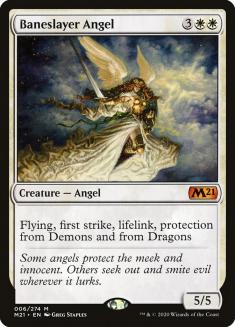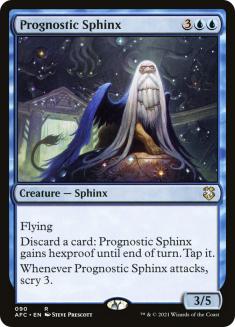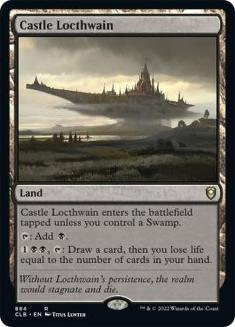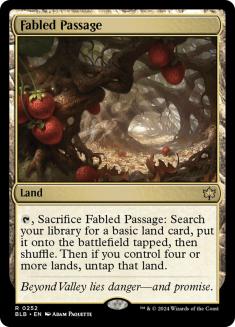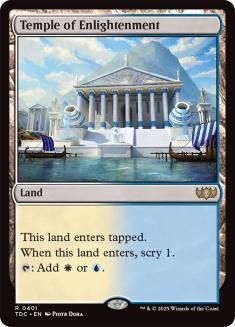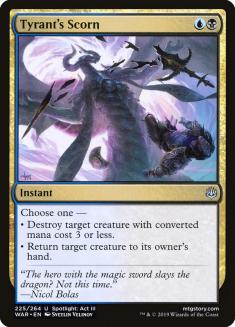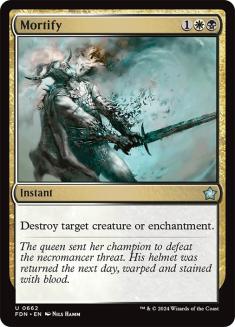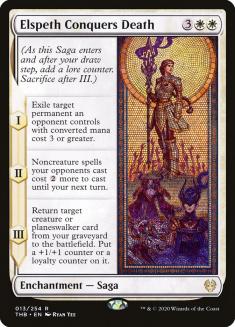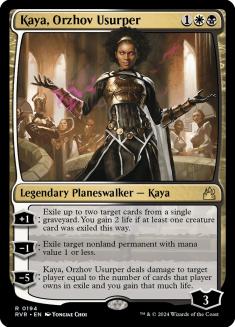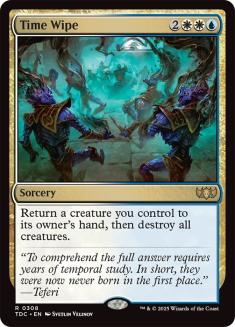Our deepest fear is not failure. We fail all the time and still we continue to persevere. What we truly fear is success. We get nervous when we’re close to it. Feel pressure when we have it. We’re scared of losing it, or worse, that it won’t be enough. Success drives us, yet it never sustains us. Eventually, the feeling success brings fades away, and without the ability to repeat upon those same results, we do as well.
That is why I’ve decided I must win a major tournament with Esper Hero. I just can’t risk people thinking my second-place finish at Mythic Championship III was a fluke, and have my name erased from the history books. I just wouldn’t be able to live with myself. I thought my dreams of rewriting history were dead, but luckily I caught a break with the release of Theros Beyond Death.
Esper Hero took a massive hit during last year’s rotation. Without a powerful late-game to be working towards in the form of Teferi, Hero of Dominaria, the deck just couldn’t keep up with what the rest of the format was doing. Even builds designed around Bolas’s Citadel just couldn’t keep up with the likes of Field of the Dead; Oko, Thief of Crowns; and Nissa, Who Shakes the World.
Then Theros Beyond Death released and Esper Hero found a chance to escape mediocrity with the release of some very powerful multicolored cards.
For as long as I can remember, Esper Hero played Elite Guardmage as the four-drop that gained card advantage. Its lifegain clause was particularly great in combination with Bolas’s Citadel, but in no way was the flying four-drop an all-star in the deck. That’s why Atris, Oracle of Half-Truths is a huge upgrade for this deck. Your deckbuilding constraint is that you want to play multicolored cards, but there just wasn’t a great one at the four-drop slot until now.
Atris is exactly what this deck was looking for. Ignoring the fun mini-game you get to play with your opponent, this card will often find you either lands or action even if your opponent gets some control over it. That’s what makes this card so powerful. Sometimes you’ll be looking for lands, and other times spells, but they might not know this. They might place a very powerful card in the single-card pile, and you might want that when you’re flooding. Other times, when you’ll want to make your land drops, the two-card pile is the pick. Okay, fine, let’s be honest, we’re always taking the pile with two cards, but you get what I’m saying!
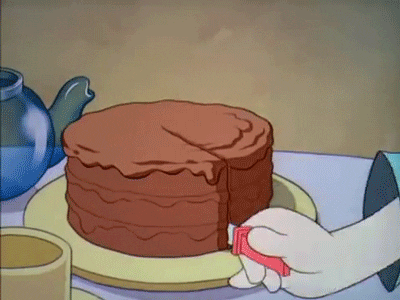
Now Atris is great and all, but what this deck really needed was a card like Ashiok, Nightmare Muse. Losing Teferi, Hero of Dominaria was a big hit for this strategy, and there’s a strong chance that Ashiok is even better in this deck than Teferi was. This ‘walker of the Underworld protects itself in multiple ways and can help create a battlefield presence, but most importantly acts like Teferi did by removing a problematic permanent from the battlefield. Oh, and don’t forget that you can return your own permanents as well with its -3 ability. Sure, you might have to exile a land, but Oath of Kaya lines are why we all play this deck!
Something to keep in mind about Ashiok is how easy it is to get to the ultimate. If you were able to attack with the Nightmare Minions, there should be at least six cards exiled to choose from. Keep in mind you can also cast cards exiled with Despark. Sometimes this won’t be worth it, but other times it might end the game right then and there.
All-in-all I was very impressed with Ashiok in the Early Access Event, and expect it to be a staple in Standard for the foreseeable future.
Last, and certainly least, of the Theros Beyond Death Esper Hero upgrades is Dream Trawler. Now, this might have been a poor way to phrase things, as it implies this card isn’t great, but it most certainly is. I just can’t be the one to admit that I like a card that might end up being a control finisher, as I’ve built up quite the anti-control reputation. Seriously, though, this card was just amazing as the top-end spell for Esper Hero. All day during the Early Access Event I would find myself in trouble, and then this Sphinx would come down and save the day.
What makes this card so special in Esper Hero is that you’re most likely not too far behind when you cast it. Once it’s on the battlefield, the game typically revolves around it, so the goal is to not be too far behind when that occurs. That’s why I believe Dream Trawler will perform better in midrange decks than control, as it will sometimes feel like a win-more finisher in the latter.
Besides that, there’s not much more to say about the card. Six mana is a steep cost, which is why it’s such a powerful card, and only time will tell if it’s better than the other options at that mana cost, but for the time being I’ll enjoy beating people over the head with Baneslayer Angel and Prognostic Sphinx’s baby.
Combined, these three cards make up quite the late-game, and that brings me to my first Esper Hero draft after the release of Theros Beyond Death!
Creatures (10)
Planeswalkers (7)
Lands (27)
Spells (16)

Esper Hero’s going to struggle against engine-based strategies as it’s just a typical “creatures and removal” sort of strategy. That’s why your list, whatever it is, has to have a density of removal spells that can answer the top decks in the format that are like this. For now I’ve focused my attention on sacrifice strategies and Mono-Black Devotion, as I feel like Bolas’s Citadel will just win the game if I ever can’t remove it.
I also think this deck is as set up for the Jeskai Fires matchup as it can be, but it would take real matches against the deck to know for certain.
What I’m trying to say here is that these fifteen cards in my sideboard are there for Day 0 of Theros Beyond Death Standard. Even by the time this article comes out, there will be new information I wasn’t privy to when writing it. It’s going to be your job to work on these numbers on your own once the metagame stabilizes, and the major takeaway here is to try not to answer everything. Just worry about as much of the top decks as you can, and make sure you hammer your opponents with specific reactionary spells in the sideboard!
The Manabase
I have little confidence this is optimal, but that’s usually the story of Week 1 manabases. I’ll slowly be working on it while I play around with this deck, but for now I highly suggest you play around with it. I’ll still discuss why I got to these exact 27 lands, though, so I may possibly give you a head start on your own discovery.
I’m still not sold this deck wants a copy of Castle Locthwain, as it’s often a very mana-intensive strategy. Still, this utility land is beyond busted and is easily the best in the cycle. I wouldn’t even consider playing the other Castles, but this one might just be too good not to make room for.
I’ve played around with the number of Fabled Passage, basic lands, and Temples a little bit so far, and have yet to come to any concrete conclusions. The deck’s actually very mana-intensive, as it needs multiple colors as early as Turn 2, yet also likes to tap out on most turns. Lands that entered the battlefield tapped can really put a damper on things when you’re trying to curve out or just bouncing an Oath of Kaya with a Teferi, Time Raveler.
The Removal
I assumed this deck would want Murderous Rider, but the card just constantly underperformed, which is weird to me. You even have access to both Tyrant’s Scorn and Teferi which can reset the Zombie Knight, and still it was just lackluster. Despark, on the other hand, was always impressive. It deals with most problematic planeswalkers, but also permanents like Cavalier of Thorns, Fires of Invention, Doom Foretold, Bolas’s Citadel, and the new cycle of Gods. Mortify has also recently gone up in value thanks to the enchantment theme of Theros Beyond Death.
The Sideboard
I’m in love with Elspeth Conquers Death and I can’t really tell you why. I guess I just love the idea that you can answer any big problem on the battlefield and eventually get some more value back. It also combos with Teferi, Time Raveler, but what doesn’t? I don’t know if this card’s going to be good enough to justify a sideboard slot, but I’m going to be playing it a lot to find out!
Until you tell me that Jund Sacrifice isn’t good enough in Standard, I’ll be playing Kaya, Orzhov Usurper in my sideboard. It’s not the most impressive planeswalker in Standard, but it serves a very real purpose in removing Witch’s Oven from the battlefield. That’s one card that Esper Hero really can’t interact with, so I wanted to make sure I have the best way possible to do it.
I’m not sure if battlefield sweepers are going to be necessary in this new Standard format, but if they are, I want this deck to play Time Wipe because it combos so well with Atris, Oracle of Half-Truths.
Besides that, the sideboard should just have one or two top-end threats for when Dream Trawler isn’t going to be good, and the rest should be targeted removal. Like I said earlier, I can’t tell you my choices are correct, but these are the cards that I thought would most likely be good in Week 1.
In the end, I can’t promise you this 75 is going to be great. All I know is I had a blast playing it in the Early Access Event on Wednesday, and it really scratched an itch that’s been building since the last rotation. I really did miss this deck, and for the first time in a long time I had fun playing Standard again.
If you were a fan of Esper Hero, I urge you to play this deck. It’s just too much fun not to!

